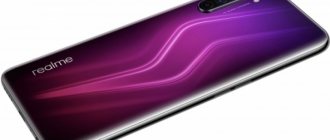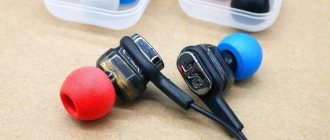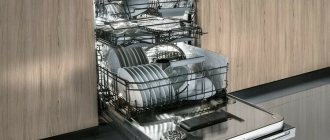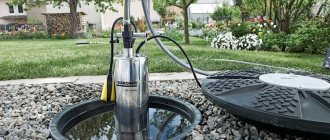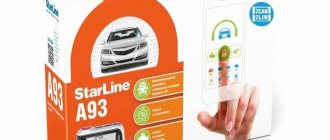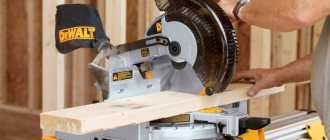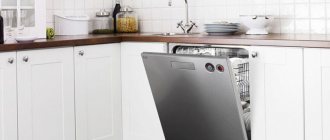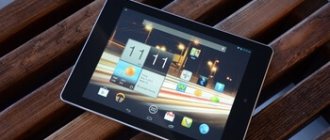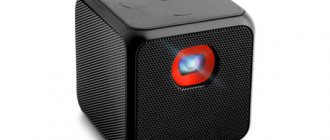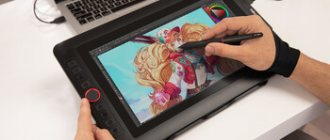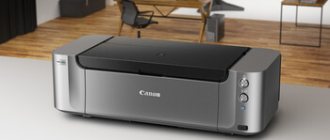The basis for choosing a projector screen is the purpose of the purchase. A model that is acceptable in one setting is not suitable in another. The purchase entails expenses, but without this device it makes no sense to purchase the main device - a projector. Achieving maximum quality content without a suitable screen is difficult.
Before purchasing a screen for a projector, you need to familiarize yourself with the existing types of similar devices, their sizes and materials. If the purchase is made for installation in a small room, then a roll-up screen that has wall or ceiling mounting options is optimal. When purchasing equipment for various presentations, monitors on a tripod or folding frame are preferable.
Determining the required screen format and whether its size matches the area of the room are important steps, without which ease of viewing and quality of content are impossible. The coating material affects the brightness of the video projector, its location in the room, and the degree of illumination.
How to choose a projector screen?
When purchasing a projector, it is recommended to consider a number of parameters:
- dimensions - the width of the canvas is 50-1000 cm, and the height varies from 30 to 900 cm, while the screen diagonal can reach 120 inches;
- screen format - the quality of resolution depends on the image format; with a screen ratio of 4:3, maximum comfort is achieved when watching films and presentations;
- brightness – color rendition of modern office projector screens is up to 3000 lumens, which ensures comfortable viewing;
- additional options - this includes a tripod for tilting the angle of the canvas, an automatic height lock, a level and a silent reversal option.
Different types of home theater projector screens
There are many different types of projector screens, from motorized screens that can be hidden when not in use to DIY screens made from a special screen material or fabric. The cost of projector screens can range from 3,000 rubles to several hundred thousand rubles
Projector screen or painted wall
The easiest way to make a projector screen is to project it directly onto a light-colored wall, preferably white or off-white, that is smooth and unpatterned. Recent results show that the best color for a projector screen is gray or even black, as we'll look at below.
Read: Home theater projector: How to choose and which one is better to buy?
A projector image on a wall can be as good as a good projector screen. The area of the wall that you want to turn into a projector screen can be made smoother and painted over with special projector screen paints to turn it into a really nice screen.
There are special paints specifically designed to turn a wall into a projector screen. These special projector wall paints can be purchased with the required gain specified. Black projection screens are very good for improving contrast ratio and for viewing in daylight or ambient light.
You can buy black projection screen paint and have a black projection screen in your home. You can also get two colors for your projection screen by painting the wall one color and purchasing an additional screen that can be retracted depending on the lighting conditions.
Rating of the TOP 15 best projector screens for 2020-2021
| Place | Name | Price |
| TOP 4 best wall-ceiling screens for projectors | ||
| 1 | Cactus Motoscreen CP-PSM-152×203 | 7 000 ₽ |
| 2 | Cactus Wallscreen CS-PSW-127×127 | 2 000 ₽ |
| 3 | Cactus Wallscreen CS-PSWE-220×165-WT | 5 000 ₽ |
| 4 | Cactus Motoscreen CS-PSM-124×221 | 6 000 ₽ |
| TOP 3 best floor screens for a projector on a tripod | ||
| 1 | Cactus TriExpert CS-PSTE-200×200-BK | 6 000 ₽ |
| 2 | Cactus Triscreen CS-PST-150×150 | 3 000 ₽ |
| 3 | Cactus Triscreen CS-PST-124×221 | 5 000 ₽ |
| TOP 3 best screens for electric projector | ||
| 1 | Cactus Motoscreen CS-PSM-150×150 | 8 000 ₽ |
| 2 | Cactus MotoExpert CS-PSME-220×220-WT | 12 000 ₽ |
| 3 | Digis ELECTRA-F DSEF-16907 | 32 000 ₽ |
| TOP 5 best projector screens with a diagonal of 100-150 inches | ||
| 1 | Cactus Wallscreen CS-PSW-149×265 | 6 000 ₽ |
| 2 | Cactus Wallscreen CS-PSW-124×221 | 4 000 ₽ |
| 3 | Cactus Wallscreen CS-PSW-168×229 | 6 000 ₽ |
| 4 | Cactus Wallscreen CS-PSW-152×203 | 3 000 ₽ |
| 5 | Cactus WallExpert CS-PSWE-240×240-WT | 6 000 ₽ |
The best wall-ceiling screens for a projector
Fixed screens are mounted on the ceiling or wall. The advantages are the ability to hide installation elements and a longer service life compared to roll models. The rating presents the best ceiling-wall projection surfaces according to users.
Cactus Motoscreen CP-PSM-152×203
Canvas with dimensions 203x152 cm and a diagonal of 100 inches with wall-ceiling mount, suitable for home and office use.
Presented in a modern design. Control is convenient using the remote control. Due to the 4:3 aspect ratio, it is convenient to view movies and photos.
The screen is made of environmentally friendly material and has a matte finish, making the picture bright and detailed.
Characteristics:
- size - 152x203 cm;
- format - 4:3;
- diagonal - 100 ";
- viewing angle - 100 °;
- weight - 10 kg.
pros
- high quality;
- convenient remote control;
- bright images;
- environmental friendliness of materials.
Minuses
- at first there is an unpleasant smell;
- awkward to unfold.
Cactus Wallscreen CS-PSW-127×127
Projection surface with dimensions 127x127 cm and a diagonal of 67 inches . Takes little
folded space for increased ease of storage.
Due to the matte coating, glare is blocked while watching a video. The screen is suitable for installation where it is not possible to install a stationary screen.
The canvas is made of high-quality material that is easy to care for . It is enough to wipe it with a sponge dipped in soapy water.
Characteristics:
- size - 127x127 cm;
- format - 1:1;
- diagonal - 67 ";
- viewing angle - 100 °;
- weight - 6 kg.
pros
- a light weight;
- ease of installation;
- takes up little space during storage;
- matte finish.
Minuses
- smell upon first use;
- difficult to unfold.
Cactus Wallscreen CS-PSWE-220×165-WT
Model with wall-ceiling mount with dimensions 203x152 cm and a diagonal of 100 inches.
Designed for professional use and can be placed in a spacious room thanks to the 4:3 aspect ratio.
The canvas has a modern design and has a matte finish that ensures high quality photos and videos.
Control is carried out using a remote control . The screen is made of high quality fiberglass, which guarantees a long service life.
Characteristics:
- size - 165x220 cm;
- format - 1:1;
- diagonal - 110 ";
- viewing angle - 160 °;
- weight - 10 kg.
pros
- low price;
- long power cord;
- remote control;
- high quality picture.
Minuses
- unpleasant sound when unfolding and folding;
- long battery replacement.
Cactus Motoscreen CS-PSM-124×221
Model in modern design with dimensions 124×221 cm and aspect ratio 16:9.
The canvas can be mounted on a wall or ceiling, so the fastening elements will not be visible.
Suitable for installation at home, educational institutions and offices. The model is equipped with an electric drive, due to which it is controlled using a remote control.
Wide format and viewing angle guarantee convenient viewing from anywhere in the room.
The image is not distorted due to the flat surface of the canvas.
Characteristics:
- size - 124x221 cm;
- format - 16:9;
- diagonal - 100 ";
- viewing angle - 160 °;
- weight - 11 kg.
pros
- low price;
- The factory smell disappears quickly;
- easy installation;
- quality work.
Minuses
- slow twisting and unfolding;
- must be unplugged during storage.
The best floor screens for a tripod projector
The rating includes models mounted on a tripod. An overview of their functionality, advantages and disadvantages according to users will simplify the choice of the most suitable model.
Cactus TriExpert CS-PSTE-200×200-BK
Stylish screen with dimensions 200x200 cm, 110 inches diagonal and 1:1 aspect ratio.
The forward projection model is equipped with a manual drive. The canvas is made of fiberglass and finished in white.
Mounted on a tripod that can be adjusted in height.
Comfortable viewing is ensured by the matte screen coating and 160° viewing angle. The model can be installed in an educational institution, office and business center.
Characteristics:
- size - 200×200 cm;
- format - 1:1;
- diagonal - 110 ";
- viewing angle - 160 °;
- weight - 13 kg.
pros
- stable tripod;
- quality material;
- no grid on the screen;
- excellent contrast.
Minuses
- the tripod does not fold;
- slowly folds and unfolds.
Cactus Triscreen CS-PST-150×150
A universal model for home and professional use with dimensions of 150×150 cm, 84 inches diagonal and 1:1 aspect ratio.
Mounted on a tripod with height adjustment. Weighs only 11kg. Due to the matte surface, there is no mesh or glare on the canvas, which guarantees a pleasant viewing of photographs and feature films.
Thanks to its compact size, the model is suitable for placement in small spaces.
Characteristics:
- size - 150×150 cm;
- format - 1:1;
- diagonal - 84 ";
- viewing angle - 100 °;
- weight - 11 kg.
pros
- big size;
- easy to use;
- does not take up much space;
- Doesn't catch glare.
Minuses
- flimsy tripod;
- The clamps are made of plastic.
Cactus Triscreen CS-PST-124×221
Floor-standing model with dimensions 221×124.5 cm and 16:9 format . Suitable for placement in
spacious rooms and conference rooms.
With this canvas it is convenient to watch videos and photos thanks to the matte screen with good reflective characteristics.
The image is clear and has optimal contrast.
Direct projection provides a viewing angle of 100°. Placed on a tripod, which can be adjusted in height.
Characteristics:
- size - 124x221 cm;
- format - 16:9;
- diagonal - 100 ";
- viewing angle - 100 °;
- weight - 12 kg.
pros
- large canvas;
- excellent light reflection;
- easy folding;
- high quality photo and video materials.
Minuses
- the tripod cannot be folded compactly;
- plastic fastening mechanisms.
Peak Gain and Relative Brightness
The nominal gain of reviewers ranged from 0.8 to 1.4. In general, the higher the gain, the brighter the image will be along the normal line—and for any given projector. Let us recall that a screen with higher gain gives a narrower scattering pattern (which is why it is, in fact, brighter at central perception) and, accordingly, a “narrower” viewing angle. Therefore, excessive gain is not always good. If you purchase a contrast screen just to “pull up” the brightness of a weak (dim) projector, we recommend leaving this dubious idea. That's not what the contrast screen is for. To increase the overall brightness of the picture, buy a better projector with a good supply of luminous flux.
In this test, we measured the brightness along the normal in the center of the screens when the test peak white was supplied to the projector (signal level 100 IRE). The goal is to compare relative brightnesses (normal, center). Here are the results in descending order of brightness:
In most cases, the manufacturers' declared nominal gains were generally consistent with the measured relative brightnesses. But there are two exceptions: SI Zero Edge Slate and Microlite Black Crystal 1.2. Both have a gain rating of 1.2, but with a given illumination they give greater brightness in the center than competitors with a higher gain of 1.4.
Best Motorized Projector Screens
Electrically driven projection screens are practical and easy to use. Control is carried out using the remote control, so you don’t have to expand and collapse the screen yourself. The rating includes the best models with remote control control according to users.
Cactus Motoscreen CS-PSM-150×150
The model is made of high quality material . Suitable for home and office. Presented in
dimensions 150x150 cm and has an aspect ratio of 1:1.
The motorized screen is mounted on a wall block. Control takes place using the remote control.
Thanks to the 84" diagonal and 100° viewing angle, comfortable video viewing is ensured.
The coating is matte, which provides excellent light reflection.
Characteristics:
- size - 150×150 cm;
- format - 1:1;
- diagonal - 84 ";
- viewing angle - 100 °;
- weight - 8 kg.
pros
- quiet motor operation;
- remote control;
- accurate image display;
- great review.
Minuses
- loud noise when folding and unfolding;
- large control unit.
Cactus MotoExpert CS-PSME-220×220-WT
With this wide-format canvas with dimensions of 220x220 cm, watching films and presentations will be a pleasure.
The model is presented with a diagonal of 120 inches and is suitable for placement in spacious rooms.
Installation is done on the floor . The picture is clear and detailed. The device is equipped with a high-quality and stable tripod.
Characteristics:
- size - 220x220 cm;
- format - 1:1;
- diagonal - 120 ";
- viewing angle - 160 °;
- weight - 15 kg.
pros
- compact frames;
- convenient trapezoid adjustment;
- stretches well;
- rolls up neatly.
Minuses
- the screen slowly rises and falls;
- large control unit.
Digis ELECTRA-F DSEF-16907
Fiberglass projection surface with a flat and smooth surface . Has black
frame, which improves the perception of the image.
Due to the steel body, the product has a long service life. The model is equipped with a quiet asynchronous electric drive and has dimensions of 197x338 cm.
Weight is 18 kg . The view is possible at an angle of up to 160 degrees.
Characteristics:
- size - 197x338 cm;
- format - 16:9;
- diagonal - 150 ";
- viewing angle - 160 °;
- weight - 18 kg.
pros
- small black frame;
- convenient control using the remote control;
- excellent tension;
- fast folding.
Minuses
- noisy motor;
- massive box.
Projector Screen Buying Guide
Some important things to consider when purchasing a projector screen: Best aspect ratio of the projector screen
The first thing to consider when purchasing a projector screen is the aspect ratio. The most common projector screen is HD 16:9 or 1.78:1.
You should know that most modern films are shot in the wider "Cinemascope" format - 2.35:1 or approximately 21:9 instead of 16:9 HD. But this wider Cinemascope screen format is converted to 16:9 formats when broadcast by television channels, and is also the official Blu-ray Disc format.
From a movie-watching connoisseur's perspective, it is best to watch movies in the original format in which they were filmed. There are means to convert 16:9 HD back to the original 2.35:1 or 21:9 format using an anamorphic lens . But this is a separate topic for consideration.
The best projector screens with a diagonal of 100-150 inches
For spacious rooms, projection surfaces with a wide diagonal of up to 150 inches are suitable. They have a wide viewing angle, which provides convenient viewing from any part of the room. The rating presents the best models for offices and educational institutions according to users.
Cactus Wallscreen CS-PSW-149×265
Canvas with wall-ceiling mount, made in a modern design . It has
dimensions 149x266 cm.
Fits well into any interior thanks to the original case.
The widescreen screen provides high image clarity and brightness. Due to the diagonal of 120 inches, the screen is suitable for large rooms.
The matte surface eliminates glare . With frequent use, creases do not form on the canvas.
Characteristics:
- size - 149x266 cm;
- format - 16:9;
- diagonal - 120 ";
- viewing angle - 100 °;
- weight - 15 kg.
pros
- simple fastening;
- low price;
- small body;
- presence of dropout.
Minuses
- At first it smells like plastic;
- there are small waves on the surface.
Cactus Wallscreen CS-PSW-124×221
Model with dimensions 125x221 cm and aspect ratio 16:9 with wall-ceiling mount.
The widescreen screen is convenient for viewing photo and video materials in a spacious room and conference room.
The canvas is made of high quality textile material . Due to the flat and smooth surface, you get an excellent picture with a good overview.
Characteristics:
- size - 125x221 cm;
- format - 16:9;
- diagonal - 100 ";
- viewing angle - 100 °;
- weight - 10 kg.
pros
- budget cost;
- detailed image;
- quality at a distance of up to 3 meters;
- takes up little storage space.
Minuses
- there are slight bends and oxen;
- you need to get used to the folding mechanism.
Cactus Wallscreen CS-PSW-168×229
The best option for installation at home, office and classroom . Model
presented in dimensions 299x168 cm and has a 16:9 format.
Due to the wide format and direct projection, a rich picture with excellent detail is obtained, due to which graphics and any smallest details are clearly visible.
Mounting on the wall is provided; lifting and folding occurs due to the spring structure.
Characteristics:
- size - 299x168 cm;
- format - 16:9;
- diagonal - 130 ";
- viewing angle - 100 °;
- weight - 17 kg.
pros
- low price;
- small frame;
- high-quality assembly;
- optimal size.
Minuses
- uncomfortable folding;
- heavy weight.
Cactus Wallscreen CS-PSW-152×203
Model for professional use with a screen of 203×152 cm and an aspect ratio of 4:3.
Wall and ceiling mounting possible. The canvas is made of high-quality textiles and reflects light well due to its matte surface.
The picture is contrasting and colorful.
The projection screen is convenient to adjust due to the springs, which smoothly unfold it and securely fix it.
Characteristics:
- size - 203×152 cm;
- format - 4:3;
- diagonal - 100 ";
- viewing angle - 100 °;
- weight - 10 kg.
pros
- low price;
- thick fabric;
- convenient fastening;
- high quality image.
Minuses
- smells like plastic;
- Difficult to fold and unfold.
Cactus WallExpert CS-PSWE-240×240-WT
Projection surface for professional use . It can be placed in
spacious classrooms and conference rooms.
Due to the size of 240x240 cm, it is convenient to view presentations and feature films. The canvas is made of high-quality fiberglass with good reflective characteristics.
Installation is possible on the floor and ceiling . Convenient adjustment is provided using a spring design.
Characteristics:
- size - 240x240 cm;
- format - 1:1;
- diagonal - 130 ";
- viewing angle - 160 °;
- weight - 12 kg.
pros
- Smooth surface;
- simple fastening;
- quality material;
- great picture.
Minuses
- factory smell;
- manual drive.
Types of projector screens
Based on the type of installation, screens are divided into the following types::
- Mobile . The canvas is in a roll and is fixed when unfolded using a special device or your own efforts. Such models are light in weight and inexpensive. Installation takes place on a folding metal frame, tube stand, tripods or tripods.
- Stationary . They are fixed to the ceiling or floor, or have a combined type of fastening. Convenience lies in the ability to hide installation elements. With the help of stationary canvases, the highest quality picture is obtained due to installation on a flat surface. Unlike roll screens, such screens retain their original appearance for a long time.
Based on the type of construction, screens are divided into the following types::
- on grommets - the elements are located around the perimeter of the canvas and are attached to the wall;
- profile - a model without return mechanisms with profiles in the lower and upper parts, due to which the web is tensioned;
- spring-loaded - canvases on tubes with a higher cost, equipped with an internal mechanism for unfolding in one movement;
- motorized - the canvases are equipped with an electric drive, due to which you can hide them in the ceiling and automatically adjust the height using the remote control.
Types of screens according to projection direction:
- direct - made of white material, the projector is placed in front of the screen and transmits the image due to the light flux;
- with rear projection - the projector is placed behind the transparent sheet, installation is carried out in large rooms due to the high cost;
- direct and rear projection - the projector can be installed from the back or front.
Gray projector screen against white
Gray screens first came to market in 2001, and Stewart Filmscreen's Grayhawk screen was the first gray screen. They were marketed as high contrast screens and the product was very successful. The way gray screens work is that they absorb ambient light and at the same time prevent light from entering the dark areas of the screen from bright areas. All this allows you to improve the contrast ratio and image quality on a gray screen.
Read: Projector or TV: Which is better to choose for your home?
Gray screens work best with bright projectors and rooms where ambient light cannot be fully controlled. Reflections from the image on the screen can magnify the light by bouncing light back onto the screen from the walls, ceiling, floor and furniture in the room. So the ambient lighting is not controlled by just turning off the lights, you should also have a projector room with dark walls, ceiling and floor, plus the furniture and fittings in the room should not have bright metal parts that might reflect light.
If you cannot meet these conditions where ambient light can be reflected and hit the screen, then a gray screen is better suited for such a room. A white screen is best suited for a projection room with fully controlled ambient lighting and a high contrast projector.
Popular manufacturing companies and their brief advantages
Products are represented by dozens of brands.
The following manufacturers of projector canvases have proven themselves well::
- CACTUS is a Chinese company that produces portable and motorized screens with diagonals from 67 to 150 inches;
- Classic Solution is a German company specializing in the production of projection screens for more than 10 years, producing unique sliding models for home and office;
- Digis is a Russian screen manufacturer that focuses on environmental friendliness and functionality;
- ScreenMedia is a Chinese company whose line includes projection screens and other interactive equipment.
